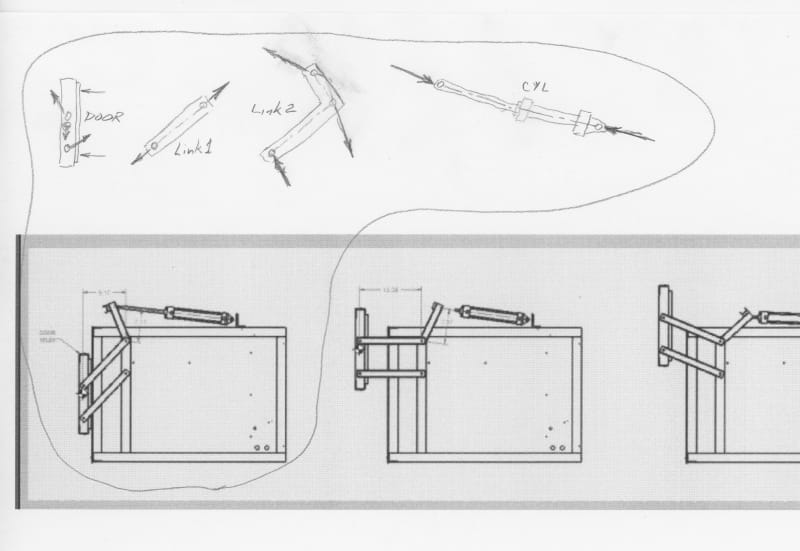grunt58
Mechanical
- Feb 4, 2005
- 490
This is not homework. I've taken some engineering classes so I'm familiar with the theory and terms. I've just never been good at applying it.
I'm building a little enclosure with a pneumatic cylinder-actuated door. Need some help making the free-body diagram and force needed to open the door. If someone wouldn't mind sketching the free body diagram and writing the formula I'd appreciate it.

I'm building a little enclosure with a pneumatic cylinder-actuated door. Need some help making the free-body diagram and force needed to open the door. If someone wouldn't mind sketching the free body diagram and writing the formula I'd appreciate it.


